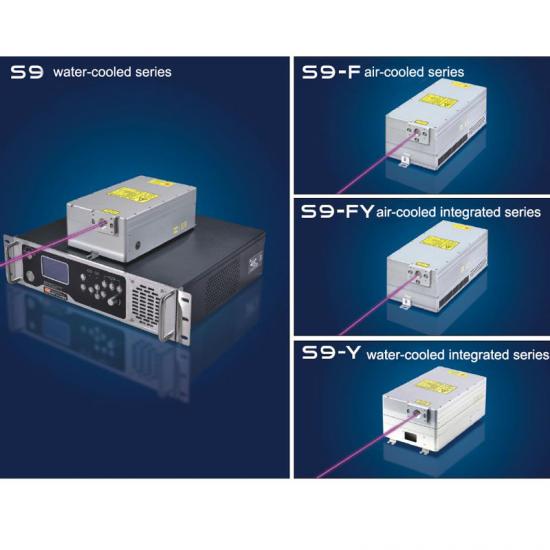Neuester Blog
355-nm-UV-Nanosekunden-Laserquelle zum Schneiden und Gravieren von Acryl
Jul 05 , 2022355-nm-UV-Nanosekunden-Laserquelle zum Schneiden und Gravieren von Acryl
Acryl, chemischer Name ist Polymethylmethacrylat, auch bekannt als Plexiglas, aufgrund seiner sehr hohen Lichtdurchlässigkeit (>92%), kristallähnlicher Transparenz + halber Dichte von Glas, nicht spröde und leicht zu färben, leicht zu verarbeiten und andere Vorteile, es wird oft für verschiedene Zwecke wie Kunsthandwerk, Außenwerbung, Schutzhüllen, Aquarien, Deckenabtrennungen usw. in verschiedene Formen geschnitten oder geschnitzt.
Da die Größe der Acrylglasplatte im Allgemeinen relativ groß ist, ist es notwendig, ein Werkzeug zu verwenden, um sie auf eine geeignete Größe zu schneiden. Im Allgemeinen kann ein Hakenmesser verwendet werden, um die Acrylplatte zu schneiden, und wenn die Acrylplatte halb geschnitten ist, kann die Acrylplatte direkt von Hand gebrochen werden. Es ist nicht einfach, Sonderformen wie Formen in einem Schritt zu schneiden; oder verwenden Sie eine Säge zum Schneiden, aber die Geschwindigkeit sollte nicht zu schnell sein, damit das Acryl nicht überhitzt und durch Reibung schmilzt und sich verformt; Außerdem kann es auch mit einem Fräser geschnitten werden, was den Vorteil hat, dass es für bestimmte Formen geschnitten werden kann. Die Wirkung ist gut und die Effizienz hoch, aber es ist leicht, einen gewissen Verlust zu verursachen.
Nach Jahren der Entwicklung ist das Acrylschneiden nun in die Ära des Laserschneidens eingetreten, und mit professioneller CNC-Software sind der Gesamtautomatisierungsgrad und die Bearbeitungsgenauigkeit sehr hoch und zeigen eine starke Produktivität.

UV-Laser | grüner Laser | UV-Laser | UV-DPSS-Laser | Nanosekundenlaser | UV-Laserquelle | Festkörperlaser
The 355nm ultraviolet light spot is small, and the high-energy (ultraviolet) photons can break the chemical bonds in the material or the surrounding medium. The ultraviolet laser processing process is called the "photo-etching" effect, which causes the material to be destroyed by a non-thermal process, and has a negative impact on the inner surface of the processed surface. The layer and nearby areas do not produce heating or thermal deformation, which can greatly reduce the mechanical deformation of the processed material. and curved surfaces provide convenience.
This is the case with the 355nm ultraviolet nanosecond solid-state laser. The output 355nm ultraviolet laser has high beam quality (M2<1.2), extremely narrow pulse width (less than 25ns), average power exceeding 30W, and high repetition rate (single pulse- 500KHz), excellent parameters and tuning, enabling high-efficiency acrylic laser cutting efficiency.
It is a pity that such an excellent laser is only used for cutting. In fact, this 355nm UV laser can also be used for acrylic laser engraving operations. By importing specific graphic information, setting specific engraving parameters, and a high-energy-density laser beam acting on the surface of acrylic materials, preset engraving can be obtained. Deep acrylic product. Especially in recent years, the processing of some exquisite handicrafts or collectibles often uses 355nm ultraviolet laser for engraving to achieve very exquisite processing, which provides higher engraving efficiency and better quality upgrade opportunities for the private customization industry of acrylic materials. added value of the product.